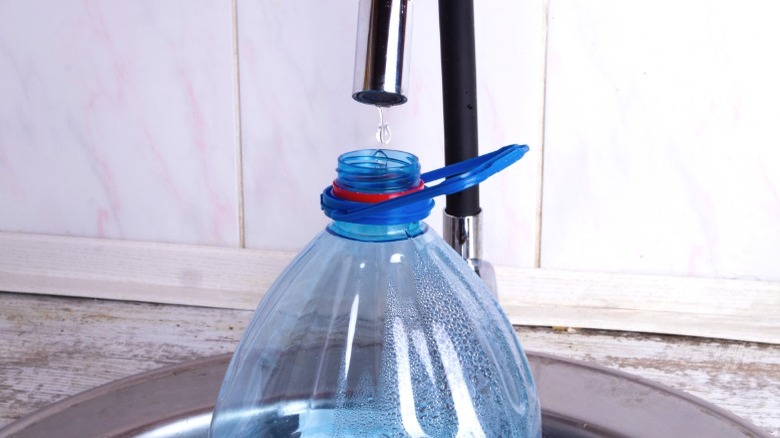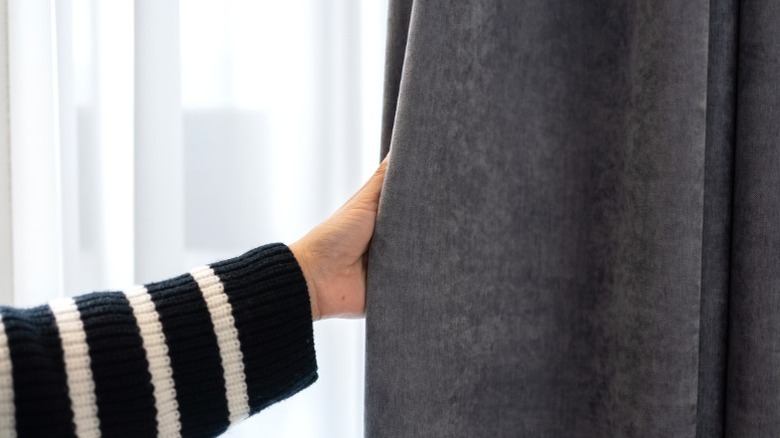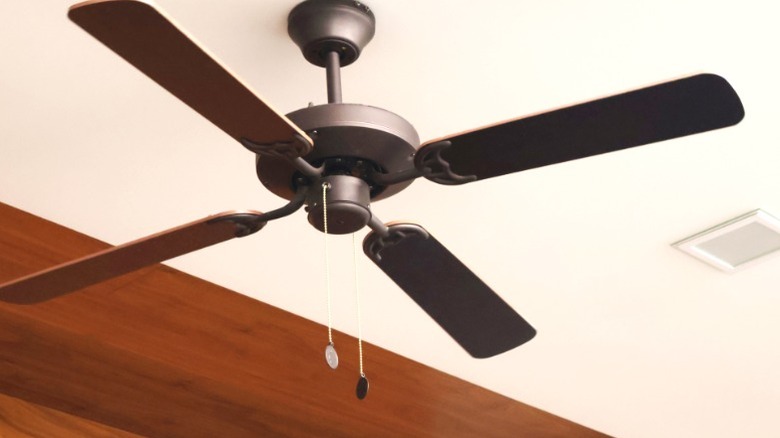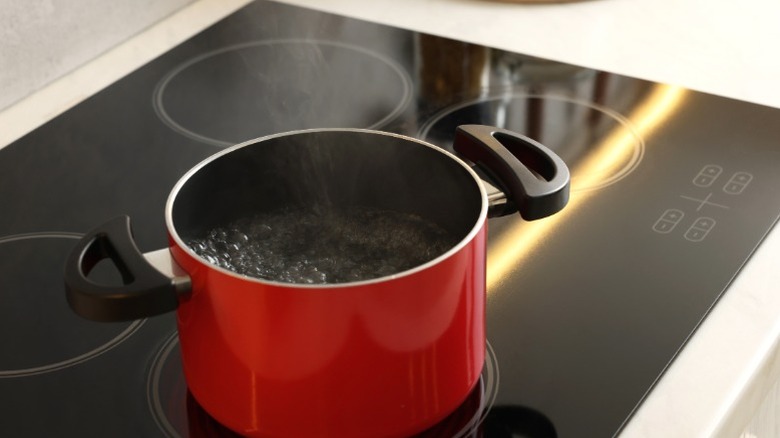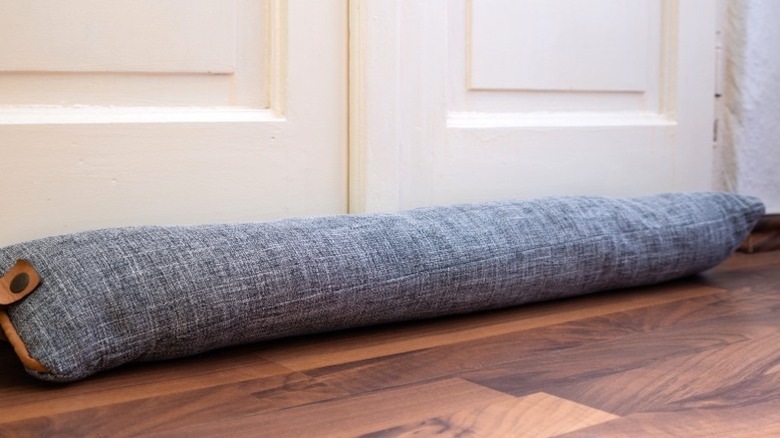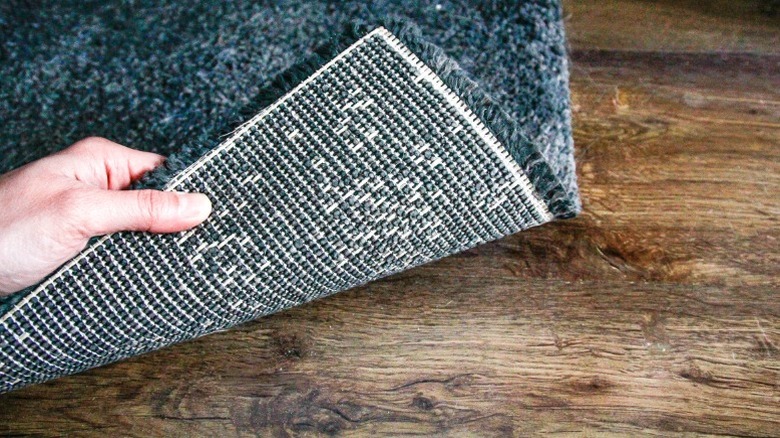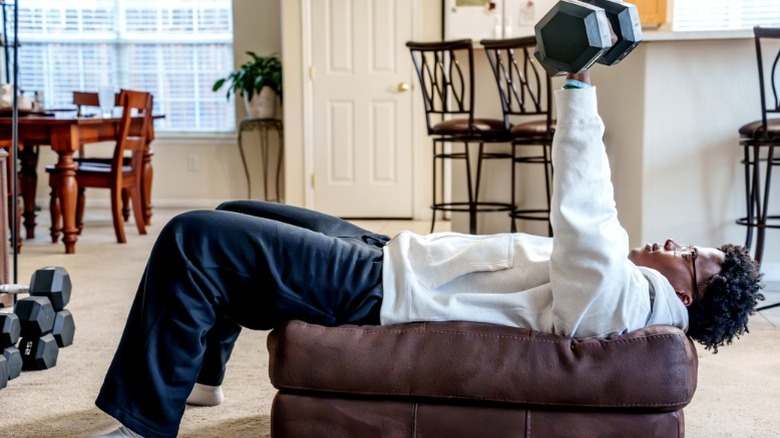10 Practically Free Tricks For Staying Warm And Cozy In Your Home During Winter
We may receive a commission on purchases made from links.
Though we rarely like to compromise on keeping a comfortable indoor climate throughout the year, there's no denying the hit to the wallet that comes with running the heater. Costs continue to climb year over year for many, with some homeowners projected to spend around $1,000 annually on their heat alone this year, per the National Energy Assistance Directors Association. It's a tough and unavoidable reality (no one controls the weather, after all), but we can make it at least a little better with smarter practices. You can start by having your HVAC checked annually to ensure your heater works as efficiently as possible. But many of the best tricks to stay warm and cozy during the winter can be practically free!
Most homeowners know the budget-friendly trick of turning into a curmudgeon and yelling at family members to put on a sweater whenever they complain about the house being too cold. But while this time-honored technique is almost guaranteed to yield results, there are, surprisingly enough, even more effective ways to warm up and get comfortable beyond extra layers, long johns, and wool socks. Make DIY heating solutions to keep you comfy, or use your curtains and other items to add warmth in practical ways. In these and many other cases, it only takes a clever use of everyday items you likely have around the home to stay comfy this winter.
DIY a hot water bottle
A hot water bottle may be a classic and (at this point) outdated heating solution, but it's still reliable for keeping the feet and body warm in bed. And if you don't have a hot water bottle, you can try making one for free. Fill an old, large plastic water bottle with hot water. Cap it well (you could also tape it shut in case of leaks), and cover it in a shirt or other cloth. Then, bring it to bed with you to keep you warm for hours.
Make your own heating pads
Like a hot water bottle, a microwavable heating pad provides portable heat in a convenient package you can DIY at home. And there are a few ways to do it. You can dampen some towels and microwave them in a plastic ziplock bag (left slightly open when heating), or you could put some dried rice or beans in an old sock. Heat the pad in the microwave in increments of 30 to 60 seconds to reach the desired temperature, and you'll have a reusable heating solution to help you get through the coldest nights.
Open your curtains during the day
While you may use them mainly for privacy and lighting, curtains also keep the room's temperature comfortable. When closed, curtains offer excellent supplemental insulation and protection from drafts. You can even use an ingenious curtain hack to keep your home warm by placing them around the front door. But although it may seem like you should keep the curtains closed at all times in winter, you should actually open them on bright, sunny days. Open your curtains during the day to let in solar heat, then close them at night to block heat loss.
Use thicker curtains
While using your curtains effectively at certain times of day can help keep you warm, installing thicker sets will improve their insulation capabilities. Insulated thermal curtain options like the NICETOWN Thermal Blackout Curtains are a relatively inexpensive way to keep the heat in and cold air out. To make this even cheaper (or completely free), you can also repurpose household items into stylish curtains like blankets and towels for bedrooms, dens, and any other area that experiences a draft.
Reverse your ceiling fan direction
Most of us appreciate the effect a direct ceiling fan breeze can have in the summer, but did you know this fixture can also keep you warmer in the winter? By reversing the ceiling fan according to the manufacturer's instructions so it spins clockwise and running it at low speed, the fan will blow the air upward. Since heat rises, this will push the warm air trapped around the ceiling to circulate back toward the floor, helping you stay warm. Adjusting your thermostat while using this technique could also lead to energy savings.
Boil water on the stove
Humidifying the home and using the range more during the winter are two popular ways to feel warmer, so why not combine them for a one–two punch by boiling water on the stove? Take advantage of this by making more soups, teas, and stocks (which are also great for keeping warm) on the stove to prevent dry air and add a little extra heat to the room. But though this is an inexpensive and helpful trick, you will have to think twice before boiling water to heat up your home if you have a gas stove.
Block drafts around doors
Drafty doorways can be a substantial source of heat loss and cold air entry during the winter. Given the number of easy solutions to fill those open spaces underneath your doors, there's no reason to let these issues stop you from keeping comfy and cozy. Draft stoppers are cheap to buy but offer a practically free way to stay warm when you DIY them. Fill a fabric tube with inexpensive fill, or use a pool noodle hack to keep your home warm during the winter.
Put down area rugs
Although they won't raise the temperature significantly, area rugs can offer valuable insulation to keep you cozy by minimizing heat loss. Consider placing them anywhere you have tile, wood, or stone floors that cause you to feel cold, particularly in the bedroom. If you don't already have extra rugs, try using thick blankets in the same way, securing the edges to prevent tripping hazards. The day will start so much better when your feet meet a soft warm rug rather than a cold hard floor when you get out of bed.
Move around and exercise
Exercise is inarguably one of the cheapest ways to stay warm and cozy in your home when winter rolls around, and it's also easily among the healthiest. Contracting muscles burn energy and produce heat, a principle you can use any time you have to come out from under the covers and complete a chore. Jogging in place, dancing, or flexing when washing dishes, cleaning, and doing other tasks will help you get that extra boost of warmth whenever you need it.
Utilize the steam from your shower
You can also put another daily chore to use during the winter for a little extra heat — taking a shower. Rather than venting the steam after your morning ablutions, open the bathroom door to carry it into the rest of the house. Be mindful of mold, though. Excess humidity can promote growth, so you may have to run the fan briefly to manage the moisture. Use this trick with the dishwasher too by cracking the door open to release the steam after a cycle (plus, your dishes will dry faster!).

